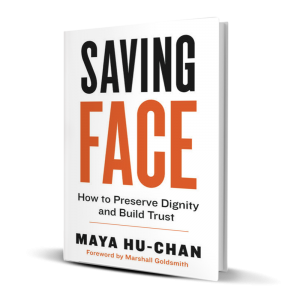The prep that goes into your pitch — and how you follow up — is almost as important as the pitch itself.
It’s a situation familiar to many entrepreneurs.
You have a wonderful business idea. You put together a strong team. You work hard on a beautiful deck. You line up a group of potential investors and make your pitch. The investors were enthusiastic and interested, and yet, radio silence. What went wrong?
From the investor’s point of view, an idea that seemed promising on paper felt flat during the pitch. They, too, wonder what went wrong.
While there are crucial things that investors look for in every pitch, success often depends on the work an entrepreneur puts in before their pitch — and after.
Here is what to do pre- and post-pitch to increase your chances of success.
1. Before the pitch: Know your investors
The same rule that applies to presentations in general applies to investor pitches: Know your audience.
Venture capitalists and angel investors look for different things from entrepreneur pitches. Because venture capitalists write checks on behalf of a group of investors, they have a stronger incentive to make smart decisions. They’re detail-oriented, thorough, and focused on numbers, so focus your pitch on financial details, metrics, and potential risks.
As high net-worth individuals, angel investors are able to act more quickly on their investment decisions because they’re only accountable to themselves. Generally, these investors are interested in the big picture, so focus on the potential upsides of your business and the market it addresses.
For all types of investors, knowing whom exactly you are pitching to is crucial prep work. Research each unique investor. Find out who they’ve invested in before, what has made them say yes, and what questions they usually ask. If you can’t find this information online, don’t be afraid to connect with other founders who’ve worked with that investor.
 2. Know your time
2. Know your time
It’s important to tailor your pitch not only to your audience but to the time you’ll have to present it. While most investors take meetings in 10- to 20-minute slots, a pitch can be longer or shorter. You have to be prepared to pivot.
Practice scaling your presentation, starting with what is most important. According to surveys, investors are most concerned about three things: knowing the founder, management team, and advisory board are made up of strong, seasoned people with proven track records; proof they’re investing in a product with a competitive edge; and details about the size of the market for the product.
Always include time for a Q&A. Generally, a 30-minute presentation would include 10 minutes of Q&A, but be ready for questions to happen at any time, too.
3. Practice and get feedback
Practice can take two forms: practicing your pitch for trusted colleagues and friends, and presenting to several investors before pitching your most ideal investor.
Friends and colleagues can provide honest feedback. Are there parts that are unclear or confusing? Is the intention behind your words aligning with how your audience is perceiving them? What is resonating most, and what isn’t?
These investor stand-ins can also help you practice answering some of the toughest questions you might get, questions such as what milestones — particularly those related to growth and revenue — will you hit and when? Where do you see this business in five years? Why do you think we are the right investor for you?
Investors often don’t wait until the Q&A portion to ask questions. Ask your friends or colleagues to interrupt with challenging questions, and practice welcoming them with honesty, transparency, and confident calmness. Don’t get defensive or show you’re irritated — sometimes, investors want to see how you react in these moments as a clue to your overall attitude and coachability.
Once you’ve lined up investors, try to pitch to a few before you get the chance to go before your ideal investor. It’s very rare to get a yes after the first few pitches. But that doesn’t mean you won’t gain anything at all — each pitch will give you valuable information on what is resonating, what kinds of questions to expect, and how you can refine your pitch, so you are in the best shape possible for that most ideal investor.
4. After the pitch
The pitch isn’t done once you’ve hit your final slide — there’s still work to be done. Follow up with a brief message thanking the investor. Make sure your tone is gracious and genuine, and avoid a generic, one-size-fits-all email by referencing specifics, like something you learned from your interaction with the investor.
If you don’t hear back for some time, don’t be afraid to follow up on your follow-up. Busy people often get buried with communications, and an extra reminder may be appreciated.
Radio silence and unanswered questions don’t have to follow your next pitch. With preparation before — and a genuine follow-up afterward — you’ll instead be hearing a resounding yes.
 My book, Saving Face: How to Preserve Dignity and Build Trust, illustrates how we can honor face to create positive first impressions, avoid causing others to lose face, and, most importantly, help others save face to build trust and lasting relationships inside and outside the workplace.
My book, Saving Face: How to Preserve Dignity and Build Trust, illustrates how we can honor face to create positive first impressions, avoid causing others to lose face, and, most importantly, help others save face to build trust and lasting relationships inside and outside the workplace.
This article was originally posted on Inc.com

